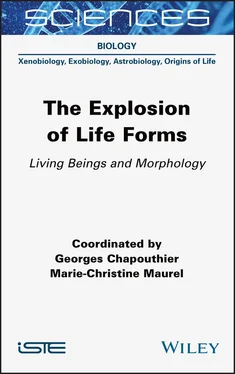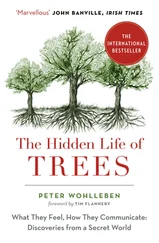On the technological level, mimicking the living, its forms, in order to develop and design medical technologies – orthoses, prostheses and other systems of electrophysiological or cognitive functional substitution, intra or extracorporeal – is a necessity in order to reconstruct anatomy and restore physiology. After placing this question in a historical and epistemological perspective, Didier Fass extends critical reflection to forms of thought or treatment by medical and symbiotic machines. He explains the associated concepts and the theoretical principles necessary to understand the organization of living organisms, which are essential for designing and modeling medical artifacts in integrative bioengineering. Thus, he describes the basic needs for biocompatibility and bio-integration as well as the fundamental requirements, including those of form(s), of “human-artificial” engineering for medicine and for “augmented humans”. In conclusion, the author proposes a perspective of integrative bioengineering with the bioprinting of medical devices and tissue engineering.
On a more general and philosophical level, Georges Chapouthier wonders whether, despite their extreme diversity, biological forms (both anatomical and mental), and consequently man-made technological forms, which have a common origin, might not also have common principles of construction. According to him, all forms of life or systems that mimic life would indeed result from the repeated application of two main principles: juxtaposition of similar units; and then integration of these units to form more complex structures, of which the original units then become parts. Just as in a mosaic, the new complex structures (the “whole”) then leave a degree of autonomy to the parts that make them up.
The book ends with a philosophical reflection by Jean-Michel Besnier on the very role of “form” in our 21st Century society. The current trend seems to be to forget form and replace it with a fluid potentiality where “nothing remains, everything evolves and offers itself to mutations and transformations”. From this perspective, almighty “information” does not just aim to complement form. It aims, according to some authors, to totally replace it with “power”, “a process that has gotten rid of formal conditions”. Besnier analyzes and underlines the dangers of this process, a triumph of blind technology, supported by transhumanist, often catastrophist currents, where “power finally escapes the mind, that is to say, human control”. Through this “deformation”, “the absence of form is equivalent to violence and death”.
This superb conclusion gives all its relevance and all its legitimacy to our work, which is, as we have seen, a plea, with multiple voices, for the living form “in all its forms”, but also, as a consequence and by the same token, a profound plea for life itself.
1
Possible Traces and Clues of Early Life Forms
Marie-Christine MAUREL
ISYEB-CNRS-MNHN, Sorbonne University, Paris, France
“The pivotal question of the living ... is that of morphogenesis.”
Claude Bernard, 1878
Since its formation 4.5 billion years ago, the Earth has occupied a unique place in the solar system. The presence of liquid water, the first cradle of life, on 70% its surface is one of the major features of its appearance: 90% of life’s history has taken place in water and we still ask ourselves numerous questions about its formation today.
Around 3.85 billion years ago, mineral matter and organic matter intertwined to produce, by chemical reactions, the amino acids of proteins, the constituents of the nucleic acids RNA and DNA (nitrogenous bases, sugars, phosphates), and all sorts of blocks that contributed to the design of the matrix of living things. Less than a billion years after the accretion of our planet, the elementary building blocks of biological molecules were thus formed on the primitive Earth. Today, life is omnipresent, covering the entire planet and its systems, at all latitudes, including our skin and our digestive tract, inhabited by thousands of bacteria species.
There is a very wide variety of shapes, from rod-shaped bacilli to spherical shells, as well as helical, spiral or star-shaped structures, to name but a few of the forms observed in microscopic bacteria, that are living either in isolation, in filamentous association, in symbiosis, etc. The diversity of shapes and sizes is also observed in viral particles (Adriaenssens et al . 2018) and in multicellular organisms such as humans, snails, ferns, geckos, etc.
And diversity also manifests itself over time: nowadays, we no longer find pithecanthropes, lepidodendrons, tyrannosaurs, ammonite trilobites, etc.
Are the varieties observed today the only ones possible? Are there other paths, other formats, other modes that have not (yet) been explored by nature? Or by our own understanding? Or by our technological limits?
The total number of living species is estimated at 10 12, and only 10 5of these have been identified to date (Locey and Lennon 2016). We only know 2–10% of the species that exist today, which represents 1/1,000 of the species that have existed for 3.85 billion years (Mora et al . 2011).
These data alone justify the weakness of our generalizations.
1.2. Have “things” always been as they are today?
What prebiotic chemical reactions can reasonably be simulated in the laboratory? The attributes of today’s living organisms (structures, perennial and hereditary metabolic pathways) have passed through billions of years of planetary, geological and environmental events. Natural selection, by not retaining what was becoming inadequate, has amplified new attempts and taken the place of what was left vacant by recent extinctions, thus favoring innovation. This is how new species settle into diversity.
It is worth recalling that Jean-Baptiste Lamarck, in Philosophie zoologique (1809), was the first to develop a physical theory of living beings, that is to say, an organization of the subject driven by a series of physical processes. He considered that the simplest beings were formed in an appropriate environment in response to physical-chemical laws. According to Lamarck, the living beings resulting from this spontaneous generation adapted to the environment and thus became more “complex”.
The invention of the microscope in the 21st Century revealed that all living organisms are made up of cells of different shapes. Since then, the cell has been regarded as the fundamental structural and functional biological unit of all living beings.
A student of Justus von Liebig, Moritz Traube, developed an “artificial mineral cell” from copper and potassium ferrocyanide in 1867. He observed the growth and budding of structures that resembled cell-like forms like those observed by Robert Hooke in 1665.
Then, Stéphane Leduc, inventor of the term “synthetic biology” (1912), declared at the beginning of the 20th Century, despite the craze for chemistry at the time: “Why is it less acceptable to try to find out how to make a cell than to make a molecule?”
Later, in the 1920s, the Soviet biochemist Alexander Oparin and the English geneticist John Burdon Sanderson Haldane proposed that elementary bricks of life, formed from gaseous elements in the atmosphere, were deposited in the primitive ocean, creating a “prebiotic soup” rich in assorted molecules that, when assembled, formed protocells or coacervates. From then on, all sorts of microspheres, micelles, protobionts and other models of single cells were imagined to represent simple compartments.
In order to “come alive”, the first processes were therefore able to take place in micro-environments that were capable of keeping the different components close to each other, thus promoting their interactions. Initially, this could be in the hollow of a rock or on clay dust, then in tiny organic vesicles, a kind of small bag that fills with molecules until it splits in two.
Читать дальше












